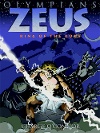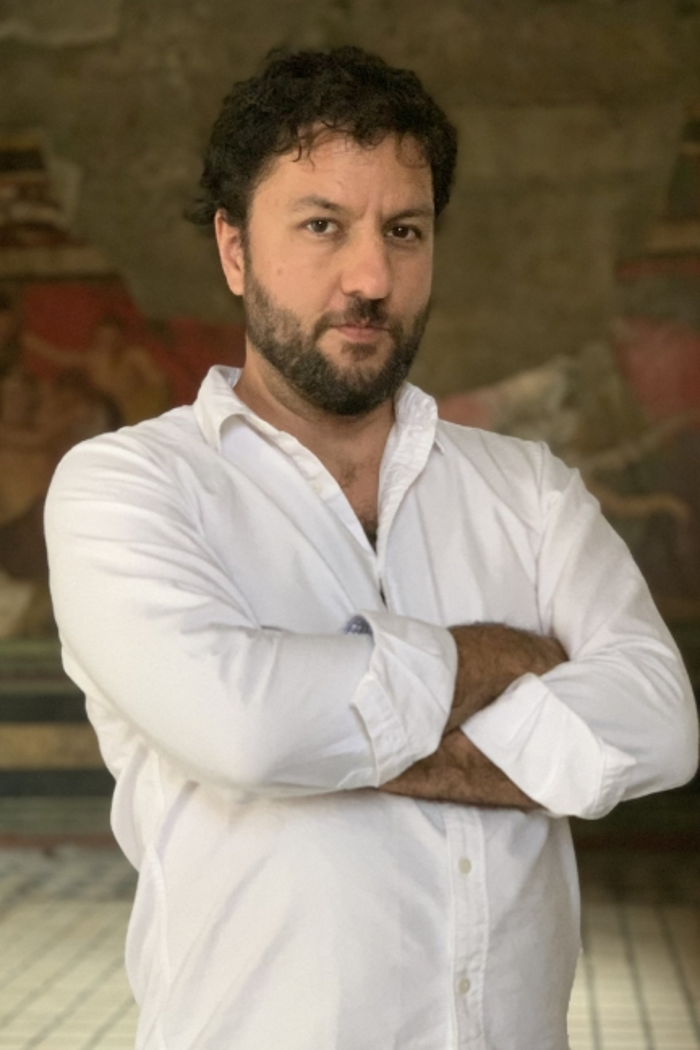The Writer's Page: A Chorus of Storytellers: Mythology and Comics
I’m fond of reminding people that Greek mythology isn’t a compendium of dead narratives about long-dead people and distant places, pulled from a dusty old book or scroll. What we now call Greek mythology is what remains of a past culture’s most sacred beliefs — a collection of living stories, a body of tales that were constantly evolving, expanding, and growing over the centuries.
I’m fond of reminding people that Greek mythology isn’t a compendium of dead narratives about long-dead people and distant places, pulled from a dusty old book or scroll. What we now call Greek mythology is what remains of a past culture’s most sacred beliefs — a collection of living stories, a body of tales that were constantly evolving, expanding, and growing over the centuries. These stories were meant to entertain their intended audience, yes, but they were so much more than a diversion. Myths examine the world around their tellers and try to make sense of the myriad wonders and darkest fears that surround them. Myths speak to Big Truths — life, death, the universe — the biggest truths that have ever been and ever will be. And for much of their existence, myths were presented in ways that had nothing to do with dusty old books.
In ancient Greece, you didn’t learn about gods and goddesses from a book. For starters, we were still a couple of millennia, give or take a few centuries, from Johannes Gutenberg, which means the written word was hard to come by. Instead, the stories of the Olympians, the Titans, the heroes and monsters suffused your existence; they filled your world. They were part of the vernacular that everyone understood, a common frame of reference — think Star Wars or the MCU today, but if Iron Man himself might suddenly fly down out of the sky and pull off a perfect superhero landing in front of you. These tales were told to you by family and friends, depicted in the art around you, presented as theater in the streets. That hill over there was where Ares was once put on trial! That strange rock was the stone that Cronos swallowed in the mistaken belief it was his son Zeus! Professional storytellers would travel from town to town and recite, over the course of days, epic poems — historical sagas of the gods and heroes of yore. If you lived then, you might find that the gods themselves would speak to you in subtle ways: the whispering wind in the leaves of an olive tree might be a secret prophecy from Zeus; the flight of doves from a nearby hilltop a proclamation of love from Aphrodite. You would join the chorus of storytellers, spinning your own tales drawn from your own experiences and observations.
The myths were a collaborative effort — they weren’t the work of one author or prophet but rather a conglomeration of a society’s explanations and beliefs of the world around it. Eventually, however, these stories passed from the living realm. Societies fall, cultures change, and the deeply held faith of one group of people, their most sacrosanct truths — well, there comes a day when they’re no longer held to be true. These stories pass from living memory. If we’re lucky, as we were in the case of the Greeks, many snapshots of these stories were recorded over the millennia, written down in the aforementioned dusty books and scrolls. What remain in these written accounts are mere ghosts of the original, constantly changing, constantly evolving stories. The fossils of a people’s deeply held beliefs.
* * *






I was in the third grade when I was first properly introduced to Greek mythology. I was a student in a prototype program that was centered on project-based learning — we would examine one subject and branch out from there to explore many other related topics. And in this class, we did a big project on Greek mythology. For a kid like me, it was a very effective way to learn. It helped me see the whole picture, and it led me down different paths.
This program was intended for so-called “gifted” students, and I suppose I was one, but I was simultaneously a kid who very easily could have slipped through the cracks. On the one hand, I was very verbal. On the other hand, however, I was very verbal — meaning I could be hard to reach through all the chatter. I loved collecting information, and I loved showing it off. By third grade I was already also obsessed with drawing. It could be extremely difficult to get me to pay attention to anything I wasn’t already interested in learning if I could be drawing a cool monster instead.
The introduction I had to Greek mythology was ideal for me because it scratched all my itches. We did oral reports dressed up as our favorite gods. Verbal, check! All those names and places and family trees and who’s related to Zeus by whom? Information collecting, check! And finally, and most crucially — all those monsters and musclemen and nymphs and bizarre creatures? And I got to draw stories with them? Obsessed with drawing, check!
This intro to the world of Greek mythology awakened something in me that has never receded. In that long-ago third-grade classroom, I was a participant in the creation of story. Sure, we dug the nuggets and kernels of myth out of books, but we also brought them to life in our drawings, our reports, our plays, our excited discussions with one another (“You’re going to be Artemis? I’m Apollo! We’re twins!”).
Having Greek mythology come to life like this, with me as a participant, set the path for my life to come. As I grew older, Greek mythology always occupied this special place in my mind — the fountain from which all stories flowed, so to speak. I discovered other mythologies (hello, Norse!), which led to me discovering comics (hello, Mighty Thor!), which led me to what I do now — write and draw books that retell classic myths in comics form.
* * *






A brief interlude about comics and how awesome they are. Comics (or graphic novels, or sequential art — I use the terms interchangeably) are an amazingly versatile way to tell a story. I think of storytelling in comics form as being built on two pillars. One pillar is the words, the tried and traditional way that most authors get their ideas across to readers. The second pillar is the pictures. But what truly makes comics special is the interplay between these two pillars — the words can tell one aspect of the story, while, in the best comics, the pictures can tell another aspect. The two stories these pillars tell may complement each other; or they may exist in direct contrast with each other. But these two pillars combine, in a strange alchemical way, to create a third pillar of storytelling — a combination of words and pictures that work together to tell a story in ways more nuanced and thorough than either individual pillar could ever hope to accomplish alone.
And here’s the really wild thing about comics: they are collaborative like no other medium. Yes, some are the work of a team of creators — writers, pencilers, inkers, colorists, letterers, etc. Other comics, like my own Olympians series, are almost entirely the work of one person. But the collaboration I am talking about is the one between the comic itself and the reader.
 This idea isn’t new: Scott McCloud, in his seminal Understanding Comics, talks about the gutter — the white space between two panels — as being the most important part of a comics page. Without that gutter, and the magic that happens within, two panels of a comic are just two separate drawings next to each other. The magic is supplied by the reader, who, in the space of that gutter, links these two images, these two collections of words and pictures, together into a story. It is within these spaces that a comics narrative comes alive in the mind of the reader.
This idea isn’t new: Scott McCloud, in his seminal Understanding Comics, talks about the gutter — the white space between two panels — as being the most important part of a comics page. Without that gutter, and the magic that happens within, two panels of a comic are just two separate drawings next to each other. The magic is supplied by the reader, who, in the space of that gutter, links these two images, these two collections of words and pictures, together into a story. It is within these spaces that a comics narrative comes alive in the mind of the reader.
This is a good time to mention something else vitally important about comics, something a lot of people don’t realize: a good comic is meant to be read more than once. During a reader’s first go-through, they might focus primarily on the words, the placement of captions and text bubbles guiding their eye over the page. Upon a second reading, with a general idea of what the words say already in mind, a reader might pay more attention to the drawings. What additional details do they provide? What hidden meanings are there for the discovery? Upon the third, fourth, fifth reading, that mystical alchemical whole I mentioned is more resolved in the mind of the reader. If you know a young reader who keeps returning to the same graphic novels, don’t worry — comics are a hearty meal, and it takes a long time to digest them completely.
For me, as a person who has built a career on retelling some of the oldest stories we have, the graphic-novel format is the ideal way to do it, because of this collaboration between storyteller and readers. As I grew up, it was with amazement, and bewilderment, and some sadness that I realized that for many people, the myths never came to life in their heads as they did for me. Perhaps they were never afforded that chance I was, way back in my third-grade classroom, to be an active participant in the stories’ telling. In many traditional books, the Greek myths can come across as impenetrable walls of text, long chains of polysyllabic names and places. It’s hard to look past all of the Polyphemuses and Odysseuses to see this as a story about a Cyclopean giant eating people.
In my graphic novels, I’m able to supply a bit of an inroad into the wonderment I discovered in Greek mythology as a child. The moments I choose to spotlight, the specific snapshot images, the clusters of words, serve as guideposts for my readers — a few panels to light the way and vivify these tales in their minds. Like mythology, comics are a collaborative creation, and I can think of no better way to bring the stories of the gods to life for a new generation.
From the November/December 2022 issue of The Horn Book Magazine.

RELATED
ALREADY A SUBSCRIBER? LOG IN
We are currently offering this content for free. Sign up now to activate your personal profile, where you can save articles for future viewing.






Add Comment :-
Be the first reader to comment.
Comment Policy:
Comment should not be empty !!!